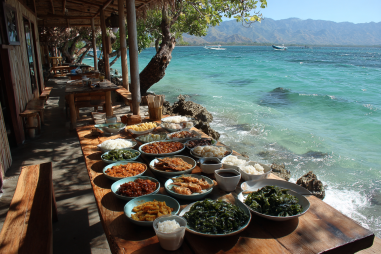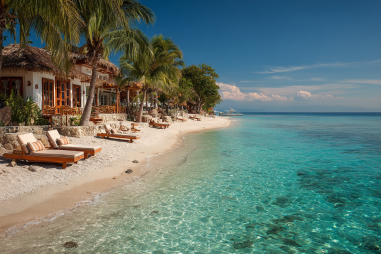Palawan, often heralded as the Philippines’ last frontier, is a treasure trove of biodiversity that captivates nature lovers and wildlife enthusiasts alike. Its capital, Puerto Princesa, serves as a gateway to a wealth of unique flora and fauna found nowhere else on earth. For travelers seeking meaningful wildlife encounters, this rich ecological region offers a remarkable blend of adventure, education, and responsible tourism. Whether you’re a birdwatcher, a wildlife photographer, or simply eager to witness the extraordinary creatures of Palawan, Puerto Princesa has something special to offer while promoting conservation and ethical interactions with nature.
Palawan’s Incredible Biodiversity
The biodiversity of Palawan is staggering, with a vast array of endemic species spread across its forests, rivers, limestone karsts, and coastal ecosystems. From the elusive Palawan pangolin and the rare Palawan bearcat to the vibrant Palawan hornbill, the island is a sanctuary for wildlife found nowhere else on the planet. This diversity stems from Palawan’s unique geographical position, which bridges the fauna of Southeast Asia and the Philippines. The region supports a balanced ecosystem where many species coexist, making it a live museum of evolutionary wonders.
Palawan’s natural habitats include mangroves, coral reefs, freshwater rivers, and tropical rainforests, each vital to sustaining this biodiversity. Recognizing the importance of conservation, Puerto Princesa and its surrounding areas have been designated protected zones, encouraging wildlife preservation and sustainable tourism practices.
Best Wildlife Spots Near Puerto Princesa
When planning your wildlife adventure, several sites near Puerto Princesa provide excellent opportunities to observe native animals in their natural habitats:
- Puerto Princesa Subterranean River National Park – Beyond its famous underground river, the park boasts lush forest reserve areas that shelter various wildlife, including macaques, monitor lizards, and unique bird species.
- Sabang Mangrove Forest – A vital ecosystem supporting crabs, mudskippers, and numerous bird species. Guided kayak tours offer a tranquil way to explore this habitat.
- Rangan Ridge Trail – Perfect for trekking enthusiasts keen on seeing rare birds, including the Palawan hornbill, and potentially spotting wildlife like the Palawan pangolin.
- Turtle Islands Wildlife Sanctuary – Located further off, this is a key site for marine turtle conservation and viewing, especially the endangered green and hawksbill turtles.
Palawan Wildlife Rescue and Conservation Center
Also known as the Crocodile Farm, the Palawan Wildlife Rescue and Conservation Center (PWRCC) is a standout destination for observing wildlife responsibly. Managed by the provincial government with support from conservation groups, the facility is dedicated to breeding and protecting endangered species such as the Philippine crocodile and saltwater crocodile.
Visitors can learn about the center’s vital role in conservation, participate in feeding sessions, and view other native wildlife like the Palawan bearcat and various species of deer and wild pigs. The center promotes education and awareness, ensuring that locals and tourists alike appreciate the importance of safeguarding Palawan’s natural heritage.
Birdwatching and Endemic Species
For avid birdwatchers, Puerto Princesa is a gateway to seeing some of the Philippines’ rarest and most colorful avian species. Palawan is home to over 150 bird species, many of which are endemic, making it a birdwatcher’s paradise.
Some notable species include:
- Palawan Hornbill – Known for its striking yellow casque and melodious calls, this bird can often be spotted in forest reserves.
- Palawan Peacock-Pheasant – Renowned for its iridescent plumage and rarity, it inhabits dense undergrowth.
- Orange-bellied Fruit Dove – A beautiful and elusive species that thrives in fruit-bearing trees.
Local birdwatching tours and guides are available to lead enthusiasts through the best viewing spots while ensuring minimal disturbance to the birds’ natural behaviors.
Dos and Don’ts of Wildlife Encounters
Wildlife encounters in Puerto Princesa can be life-changing experiences, but they must be handled with care and respect to protect the animals and their habitats. Here are some essential guidelines:
- Do maintain a safe and respectful distance from all animals to avoid causing stress or aggression.
- Do use binoculars and cameras with zoom lenses instead of approaching animals directly.
- Don’t feed wild animals. Human food can be harmful, and feeding disrupts natural foraging behaviors.
- Don’t litter or leave any waste behind to preserve natural habitats.
- Do follow your guide’s instructions carefully during tours to avoid accidental harm to wildlife or habitats.
- Don’t make loud noises or sudden movements, as these may frighten animals and disrupt their routines.
Guided Tours and Educational Programs
One of the best ways to experience Puerto Princesa’s wildlife is through guided tours led by knowledgeable local experts. These tours not only increase your chances of seeing rare animals but also deepen your understanding of their ecology and conservation status.
Options include:
- Birdwatching tours that focus on endemic species and their habitats.
- Night safaris to observe nocturnal creatures such as civets and owls.
- Visits to conservation centers with educational talks and interactive experiences.
- Boat tours through mangroves and coastal areas for marine life spotting.
These educational programs often emphasize responsible ecotourism and encourage travelers to become advocates for Palawan’s wildlife protection.
Photography Tips for Capturing Wildlife
Capturing the beauty of Palawan’s animals on camera requires patience, respect, and the right techniques:
- Use a telephoto lens to photograph animals from a distance without disturbing them.
- Prefer natural light and avoid flash photography, which can startle wildlife.
- Be patient and move slowly to increase chances of natural and candid shots.
- Learn about animal behavior to anticipate movements and moments worth capturing.
- Respect the environment by staying on designated trails to avoid damaging flora.
Combining ethical observation with careful photography ensures a rewarding experience without compromising animal welfare.
Conservation Efforts and How Tourists Can Help
Puerto Princesa and Palawan as a whole have made significant strides in conserving their unique biodiversity through protected areas, community involvement, and education. Tourists play a crucial role in supporting these efforts by choosing responsible tours, minimizing environmental impact, and supporting local conservation initiatives.
Ways tourists can contribute include:
- Participating in eco-friendly tours that prioritize animal welfare and habitat protection.
- Donating to or volunteering with local conservation organizations.
- Reducing single-use plastics and packing out all trash during nature outings.
- Sharing responsible travel experiences to raise awareness among friends and family.
- Respecting local customs and laws aimed at protecting wildlife and natural areas.
By traveling conscientiously, visitors help ensure that Puerto Princesa’s extraordinary wildlife will continue to thrive for future generations.
Experience Palawan’s Wildlife Like Never Before
Wildlife encounters in Puerto Princesa offer more than just sightseeing — they provide insight into the delicate balance of nature and the importance of preserving it. From the mysterious depths of the underground river to the bird-filled treetops and coastal waters, every corner of Palawan reveals something extraordinary. Whether you’re trekking through forest trails, paddling among mangroves, or learning about conservation efforts firsthand, your journey becomes a part of protecting this ecological haven.
So pack your binoculars, bring your sense of wonder, and prepare to meet Palawan’s unique animals in a way that’s respectful, educational, and unforgettable.







